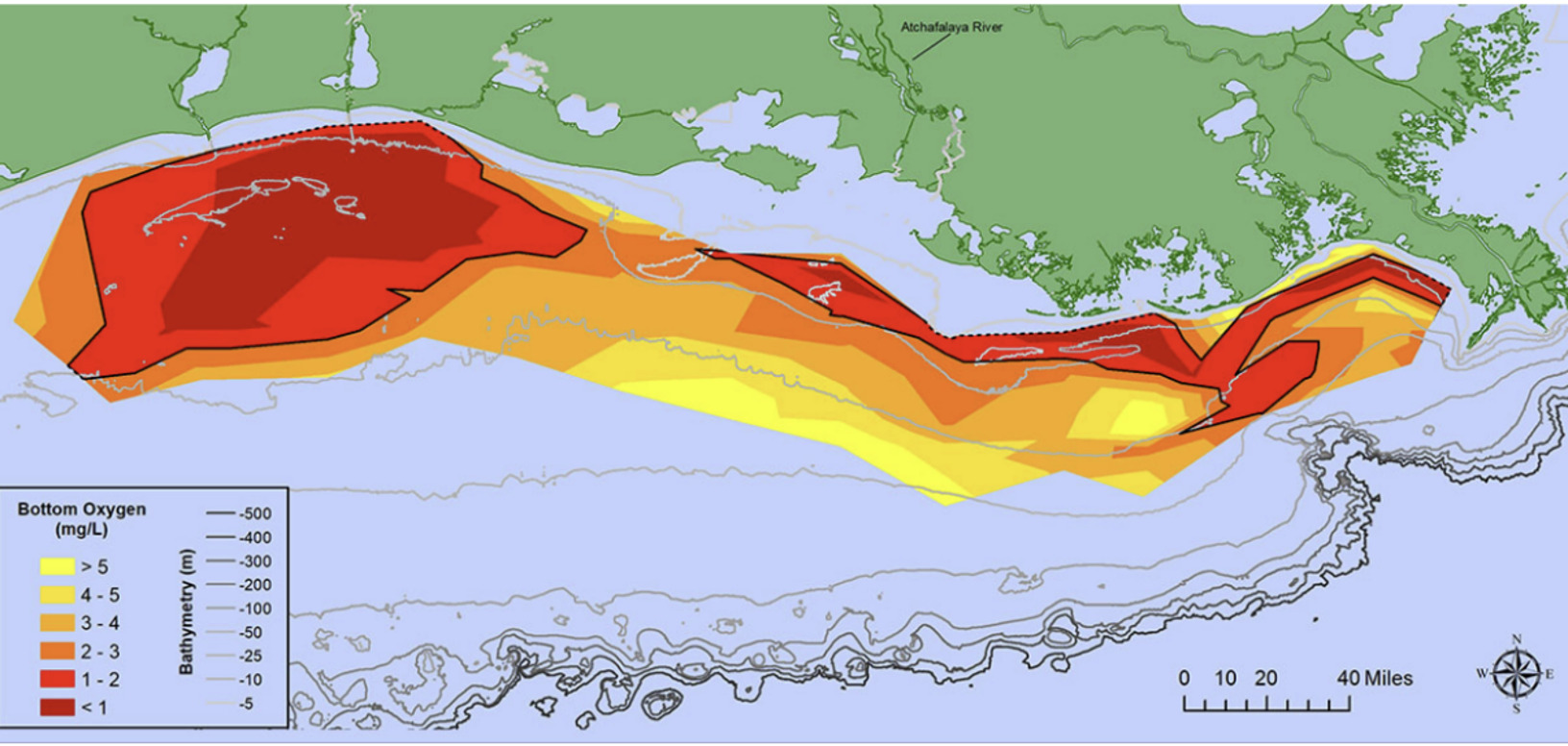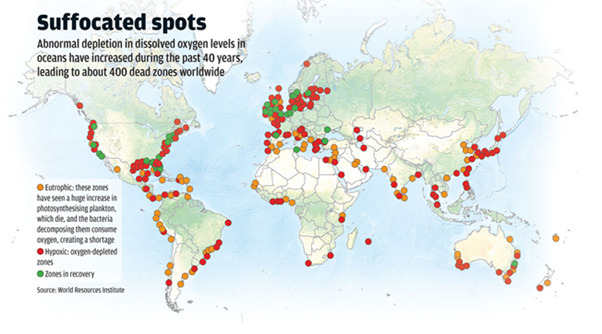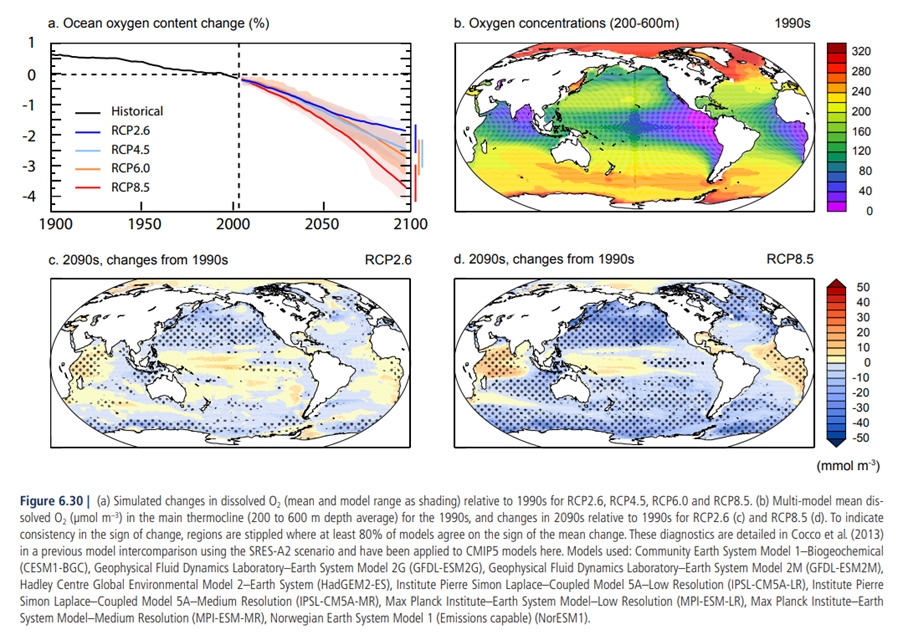Global warming and the increasing severity and prevalence of HABs is contributing to an increase in the prevalence and severity of hypoxic and anoxic ocean layers also known as oxygen minimum zones (OMZ) or “dead zones” in which few, if any, species can survive.
Dissolved oxygen in seawater supports some of the largest ecosystems on the planet but dissolved oxygen content is predicted to decline by 1-7% by 2100 (Keeling, Körtzinger & Gruber, 2009). Decreasing oxygen availability in marine ecosystems and the rising prevalence of hypoxia and dead zones warrants major concern. The causes of this so-called ocean deoxygenation are twofold.
The first is, once again, nutrient over-enrichment and the subsequent formation of HABs. Following HAB-death, the decomposition process rapidly consumes dissolved oxygen, and hypoxia ensues. Some nutrient-loaded hypoxic waters are now-infamous “dead zones,”—areas where the deep water is so low in dissolved oxygen that sea creatures can't survive—such as the northern Gulf of Mexico (seen in Figure below), the Chesapeake Bay, and Lake Erie most summers (Keeling, Körtzinger & Gruber, 2009; NOAA, 2021).

Map of the hypoxic zone in the Gulf of Mexico which covered 6,334 square miles in 2021 and is the 16th largest ever measured. The areas in red have dissolved oxygen concentrations which are considered hypoxic (less than 2 mg/L) at the bottom of the seafloor. Source: NOAA, 2021
The other major cause is global warming. Warmer water both holds less dissolved oxygen and is more buoyant, floating above cooler layers and preventing their atmospheric exchange, eventually leading to deoxygenation. Ocean warming further fuels blooms of algae, can exacerbate and intensify dead zones, impacts deep ocean waters that have few nutrients and, as visualised in Figure 8, is expected to impact the majority of existing dead zones (NOAA, 2015).

Locations impacted by eutrophication and its consequences - algal blooms and hypoxia.

Global ocean dissolved oxygen concentrations in the 1990’s and how they are expected to change according to two (of five) climate change-induced ocean deoxygenation models.
As with HABs, instances of low-oxygen aquatic environments are on the rise. The number of dead zones across the world is growing exponentially, doubling each decade since the 1960s. The number of dead zones worldwide – areas of water that lack sufficient oxygen to support marine life – increased from around 400 in 2008 to approximately 700 in 2019. Deoxygenation and dead zones are clear and present threats to marine ecosystems globally, and with that, to ocean services to society.